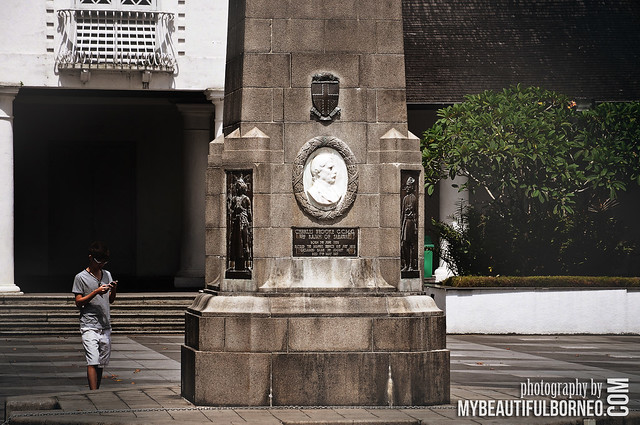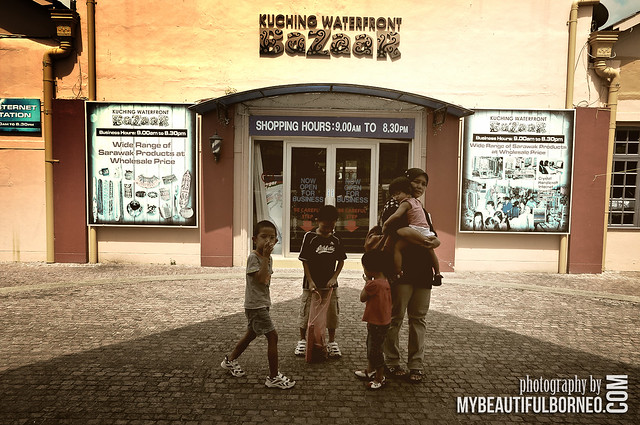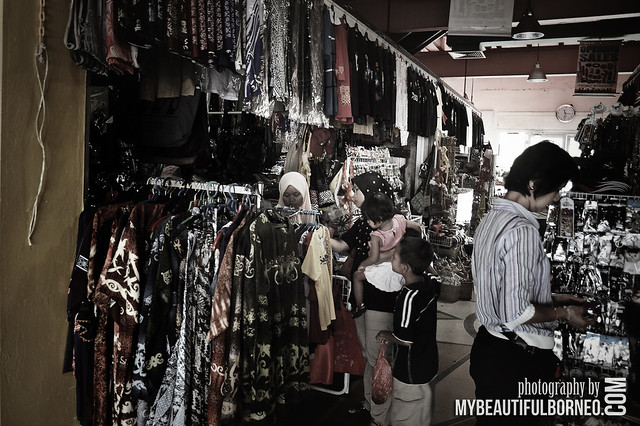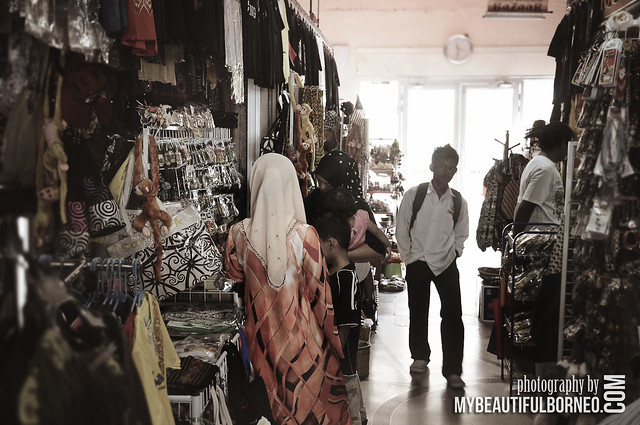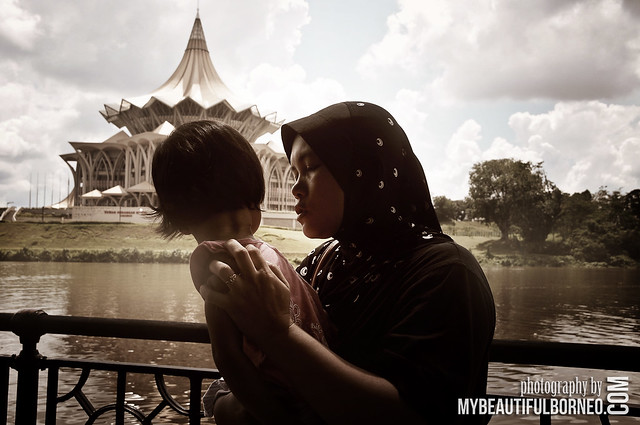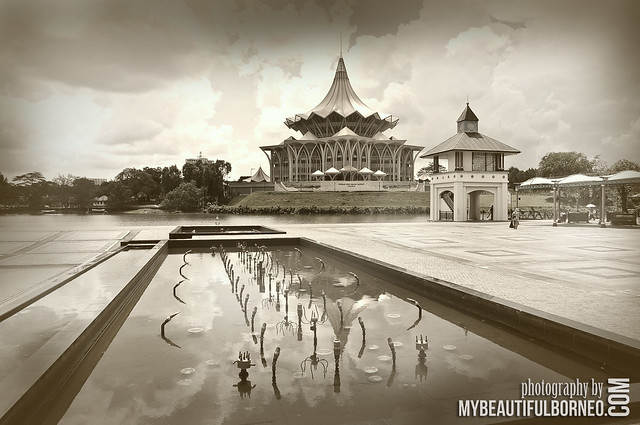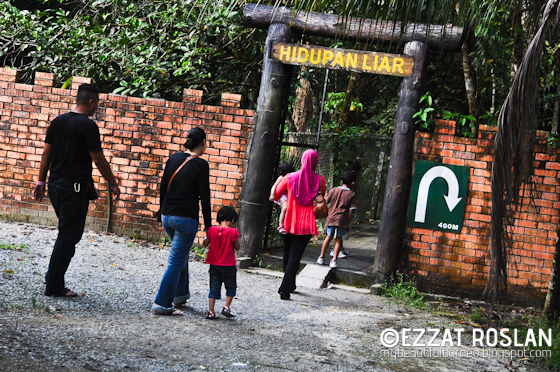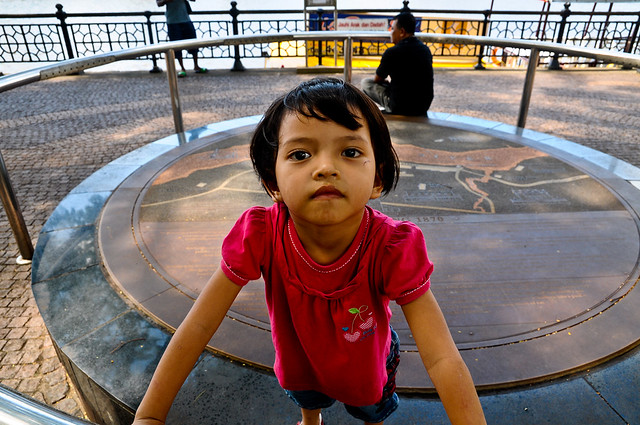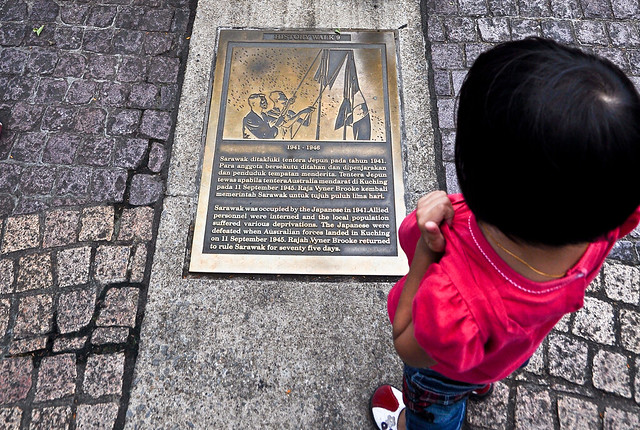This is another post about our trip to
Kuching Sarawak. I like to share with others because there are lots of interesting things from our experience to explore the history of Bumi Kenyalang (Land of the Hornbills), where it can be found in the Chinese History Museum (Chinese Chamber of Commerce Building) at Kuching, Sarawak.

A visit to this museum as early as 9.00 am. It is quite easy to find this building because it just right opposite the Tua Pek Kong Temple and not far from Harbour View Hotel where we stayed. Our arrival was greeted by one of the officers in charge of the museum. He graciously invited us inside. I saw one notice board near the main entrance inform that visitors can bring camera only with the permission, so I showed my DSLR, ask their permission and of course the person looking after the place allowed me.
The building was officially opened in 1912. Established to handle administration of the laws and customs associated
with marriage, divorce, and other properties specific to the Chinese community in Sarawak. This is consistent with the requirements of King Charles Vyner Brooke, who wants the Chinese handle their own property. The first chairman was Mr Ong Tiong Swee. He is assisted by six judges from a variety of Chinese descent to be appointed each year. Building design is influenced by the British colonial building design. and a simple rectangular shape with a hall measuring 46 feet square, and wooden ceilings. In 1993, Sarawak Government has renovated this building as Chinese History Museum.

The exhibition at this museum displays many elements related to the origin; quarter; dialect groups: traditional skills, culture and festivals; traditional musical instruments; and leader. The goal is to educate the current generation to better understand and appreciate the struggles of earlier pioneers. What is more interesting, the elements of this history is not only presented in the form of artifacts and visual, but are also presented in the form of audio. Visitors can listen to conversations using a variety of dialects, which refers to the history display. The Chinese visitors can also check their Chinese name that is featured on one of the walls in the museum.




One of the architectural model that is synonymous and the iconography of the Chinese community are also being exhibited in this museum. The Chinese are well known for architecture based on the principles of symmetry and balance. This concept is often presented in the form of symbolic abstract architecture of three types of components, frames, and decorative elements.
The uniqueness of Chinese architecture is usually apparent in unique roof and has a curved and elongated shape with a ridge Yan-Wei Chi . While the wood bracket supports ("Dougong") are often used as a helper to hold multi-tilt roof. At present we are still able to see this architecture is used in traditional buildings such as the temple of the Chinese community.
Chinese people and pottery can not be separated. In fact, I've read a script that in English, "China" not only refers to the state of a country (China), but also carries the meaning of pottery. It is no wonder this museum also displays some artifacts on pottery used by the Chinese, especially in Sarawak.
There a also featured some traditional Chinese musical instruments, including the Qin, Gu Zheng, mang Luo, Da Hu Gi and Pi Pa (pipe). It is a four stringed instrument. Pi Pa body is made of wood, while the use of metal strings. During play, Pi Pa held in standing position and placed on the shoulders of the players. Pi Pa ropes then extracted with tips of fingers and nails. The fingers of other hand placed on the strings between the fret to produce various pitches. Usually it is often played
to accompany the Chinese opera singing solo or accompanied. Below are some of the photos that I took.
A record player classic (gramophone / phonograph record player) is placed near the information counter in the museum. The red colour or 'hong' is the preferred color of the Chinese community. For them, the red reflects a clear, bright conditions and represents a promising ray brightness of joy in life.
Visit to this museum for the first time is a wonderful experience. My children also happy. I can saw their pleasure when pressing the button repeatedly to listen to audio recordings of the Chinese community. Even though they (including myself) do not understand what the talk about (only understood after reading the transcript provided), but the audio is able to provide an environment as if we were contemporaries who are involved.
However, children like them should be given guidance and clarification because their cognitive still hard to think of abstract things. I believe that early exposure like this will teach them to better appreciate the past history of their ancestors.
Pleasure of children visible when pressing the button repeatedly to listen to audio recordings of the Chinese community. Even though they (including myself) do not understand what the talk about (only understood after reading the transcript provided), but the audio is able to provide an environment as if we were contemporaries who are involved.
I think that is enough because I don't want to spoil the suspense when you visit the Chinese History Museum in Kuching Sarawak soon. So, anyone who has opportunity to visit Kuching, do not miss exploring the history of our country here. Visitors can come to this museum every Monday to Sunday, from 9.00 am to 4.30 pm and entry is free.
Authors note: Some of the information shown here is obtained verbally from the museum staff and referrals from several sources. Authors apologize if erroneous information contained in this entry.
